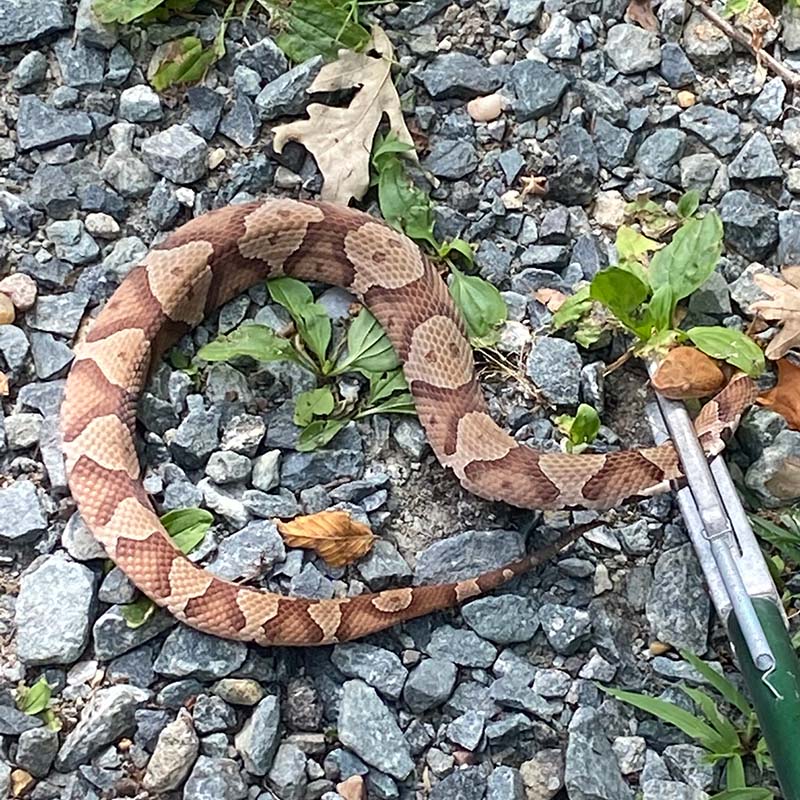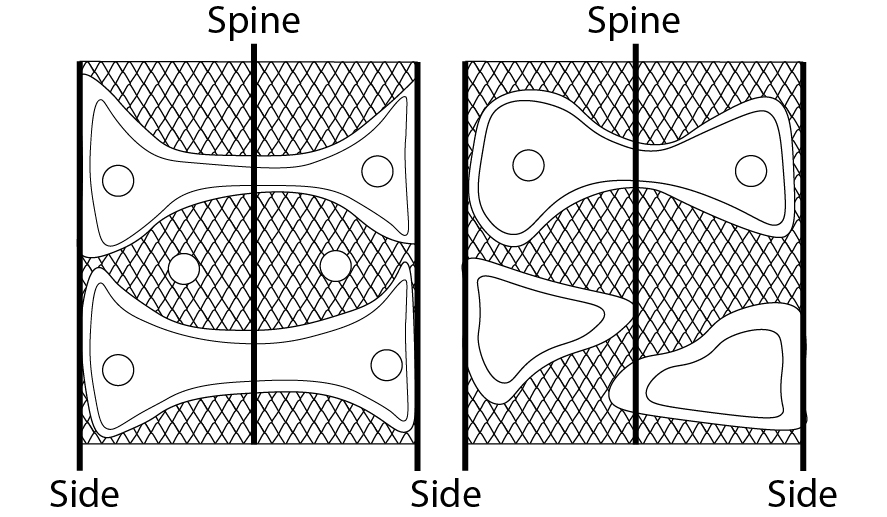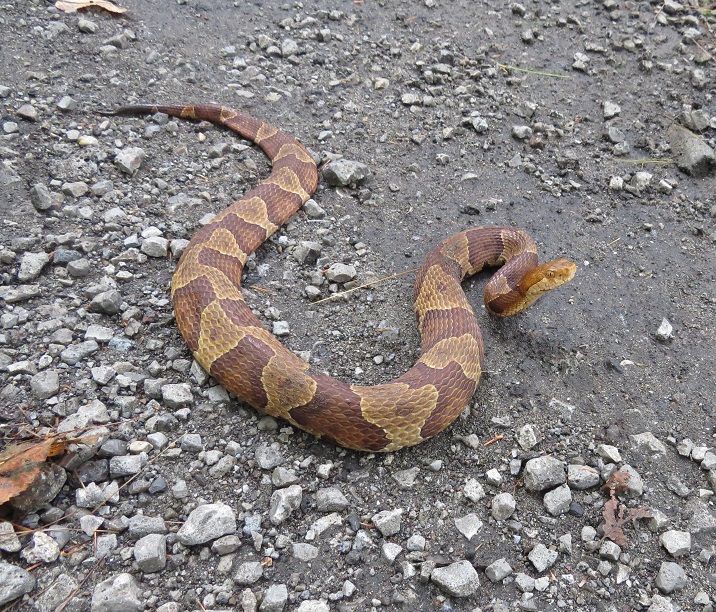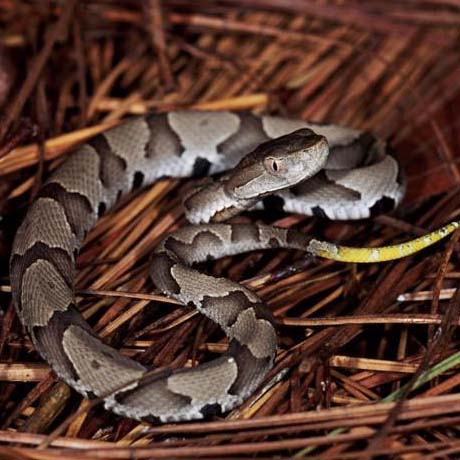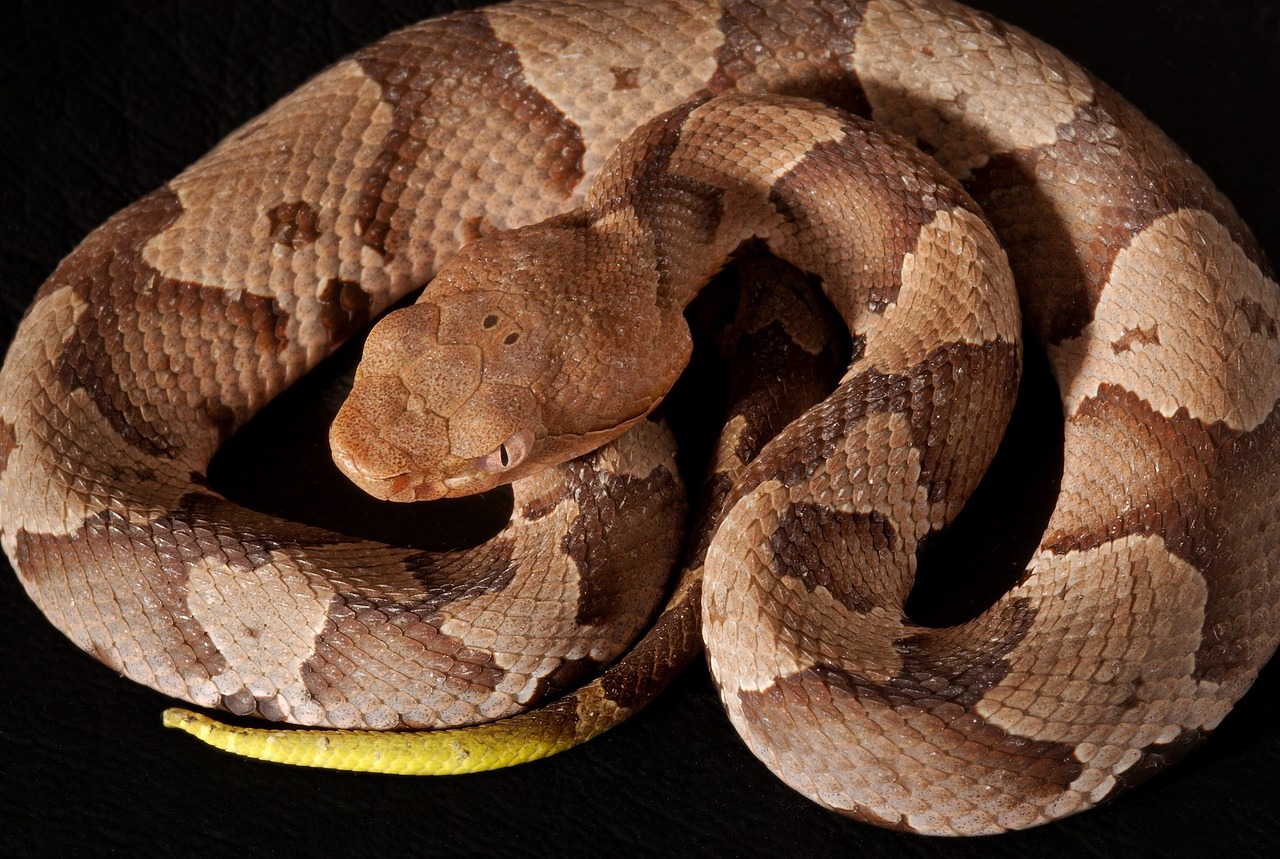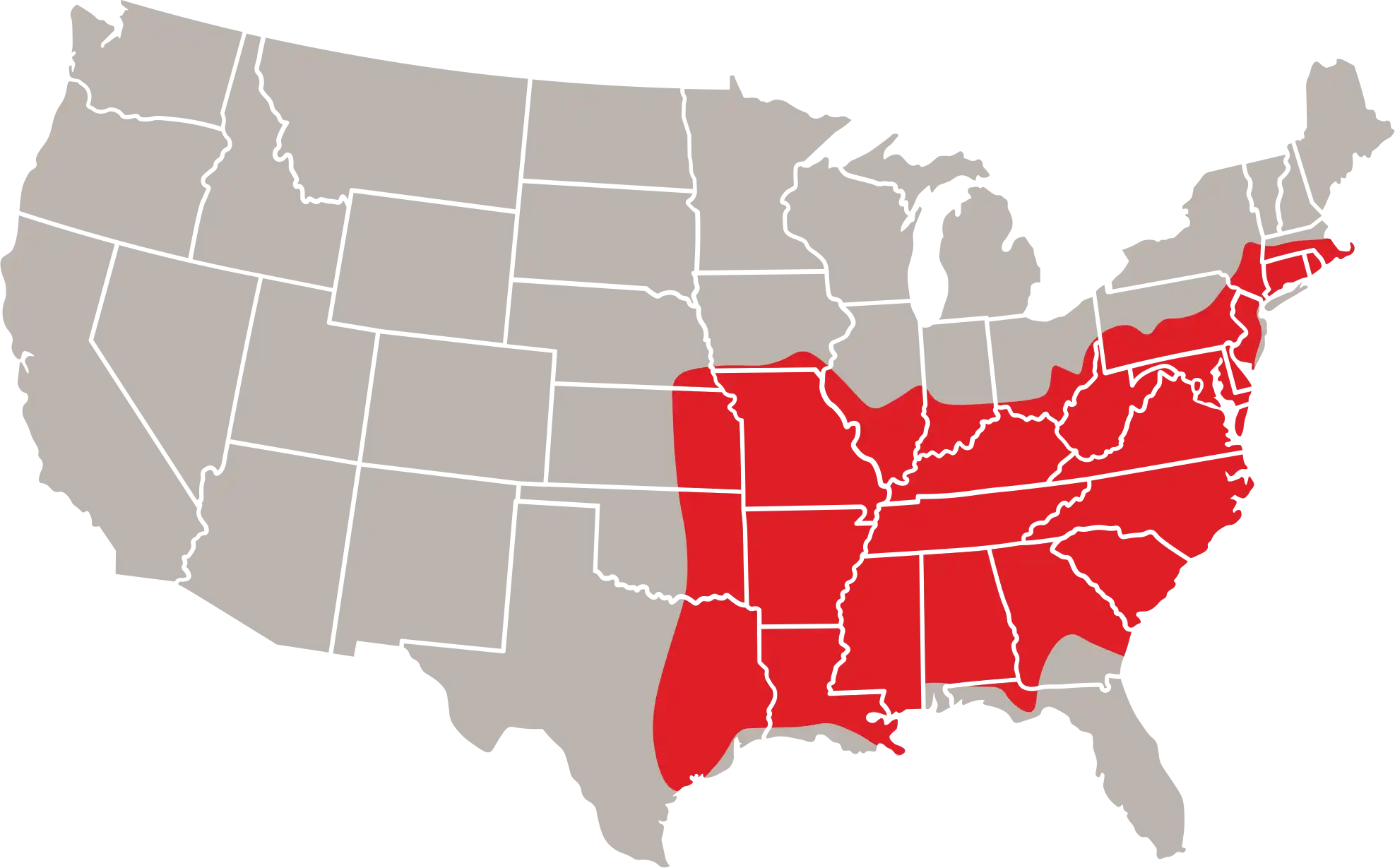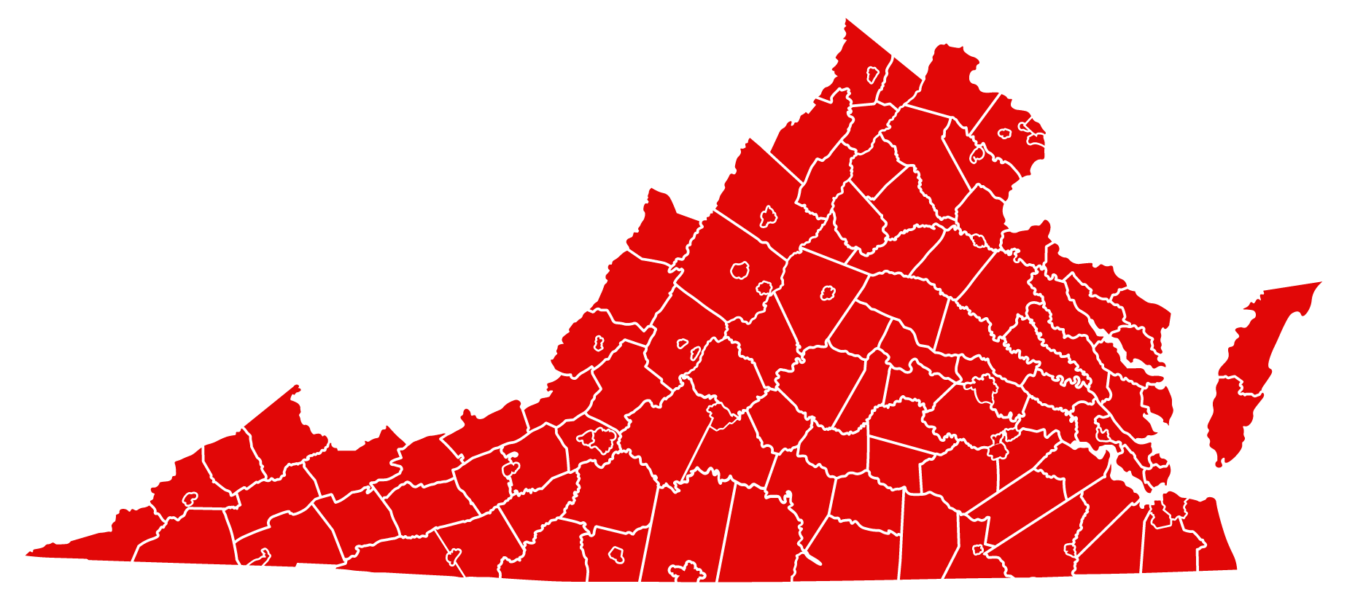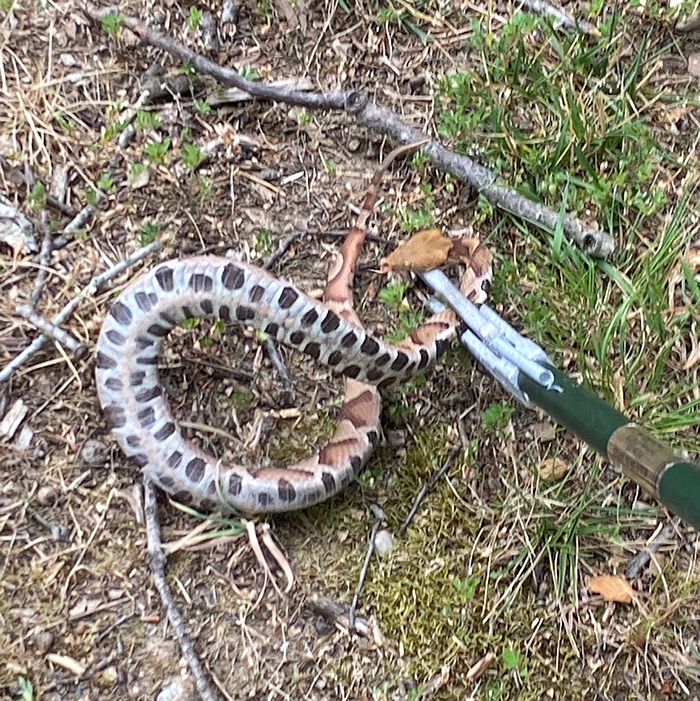
- Scientific Name
- Agkistrodon contortrix
- Range
- All Across Virginia
- Prey
- Mice, Birds, and Insects
- Venomous
- Yes
- Features
- Copper Color with Dark Hourglass Bands
- Litter Size
- 2 to 12 per Birth
- Life Span
- 13-18 Years
- Length
- 2-3 feet
- Aggression
- Low
Quick Links
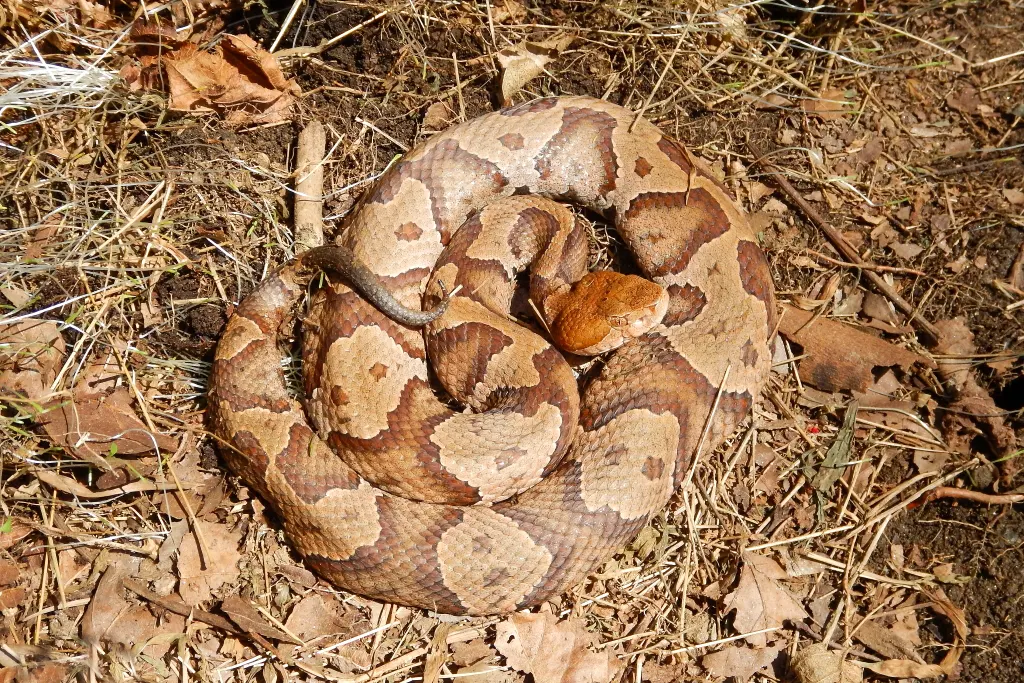
A Brief Introduction on Copperheads
Copperheads are arguably the most notorious venomous snake found in Virginia, instantly recognizable by their coppery brown coloring and hourglass pattern. As professional snake removal experts serving the state, we frequently receive calls to remove copperheads from homes and yards.
This page provides key details about copperhead behavior, habitat, reproduction, diet, venom, and potential risk to humans. We aim to educate homeowners and property managers on copperhead facts versus fiction, proper identification, and most importantly – what to do if you spot one on your land. By understanding copperhead habits and biology, you can take appropriate precautions if these snakes are present near your home.
Copperhead Description
Adult Copperheads
Adult copperheads typically have a light brown, coppery coloration with distinctive hourglass shaped dark brown or reddish-brown bands crossing their body. These bands are wider at the sides and narrow towards the spine. The coloring provides camouflage amongst fallen leaves and wooded areas. Copperheads have thick, heavy bodies with broad, triangular-shaped heads.
Juvenile Copperheads
Young copperheads look markedly different from the adults. They have a grayish coloration with hints of light brown, and the tips of their tails are brightly colored yellow.
This bright tail tip fades as they mature. Juvenile copperhead patterning is faint at birth but becomes more defined as they grow older. By around 3 years old, they take on the standard adult coloration and hourglass pattern.
Size
The normal length for copperheads is between 24 and 36 inches long. With females generally being larger than the males, however, males tend to have a larger tail. Juvenile copperheads are usually 7-10 inches long.
Myth: Copperhead Musk Smell Like Cucumbers
False:
Copperheads release a defensive musk that does smell like cucumbers to some people. However, many of our snake technicians here never smelt the cucumber smell when handling copperheads. The odor could be mixed with other smells such as leaves, or feces, and is generally described as bad smelling. The smell is heavily subjective, and as such detecting copperheads by smell is a bad way to detect them.
Identifying a Copperhead by Appearance
With so many Copperheads here in Virginia, people will call any snake with a distinct pattern a Copperhead. Are you unsure if what you have is a Copperhead?
Follow this handy guide, so you won’t get confused!
Pattern
Good rule of thumb is that copperheads have an hourglass pattern to them. This means that the patterns get wider the closer to the sides and narrower near the spine as shown in this image. Note that not all copperheads will have dots on their back, and that both sides do not always connect.
The coloration of these bands is important to note, as they get noticeably darker on the edges of the bands. This is to help them mimic fallen leaves, which is a good way to recognize them
Colors
Copperheads get their name from their color, which is a copper rusty color. They tend to get confused with Water Moccasins another venomous snake here in Virginia. However, Water Moccasins tend to be a very dark brown to mimic wet fallen leaves. Copperheads are always this copper color except the juveniles who tend to be a light gray with sulfur colored tips on their tails.
Head Shape
Here in Virginia, head shape is an easy way to identify a copperhead. It has a unique triangular head with a distinctive narrow neck. This is a telltale sign that the snake is venomous, as the venom glands are stored in the back of the head.
Which is different from the common round-headed non-venomous snakes found in the region, due to the lack of those glands. Beware that some snakes such as the hognose snake will flatten their head to mimic the triangle head.
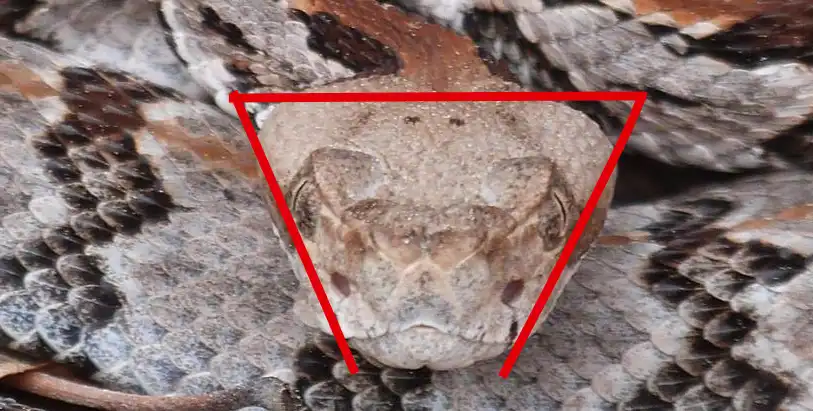
Notice the Triangular Head Shape, all venomous snakes in Virginia have this shape
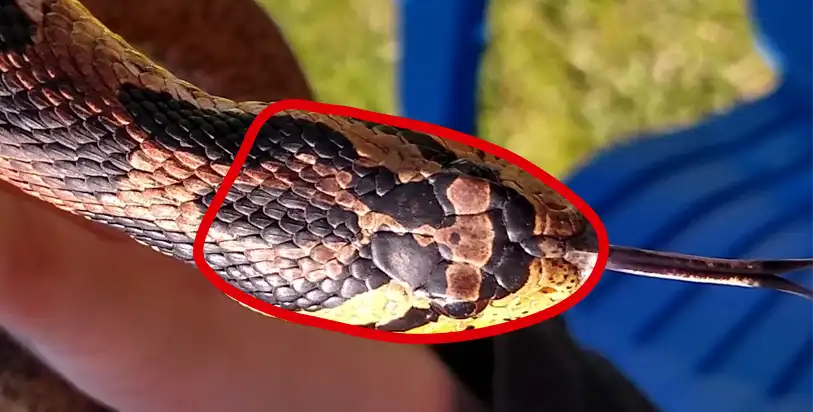
This is the Eastern Hognose Snake, which can flatten their head to mimic a Copperhead.
Copperhead Behavior
Copperhead behaviors and habits allow them to thrive across Virginia. Their activity cycles change with the seasons based on optimal temperatures and hunting needs. When threatened, an intricate set of defensive strategies kicks in from camouflage to tail vibrations.
Most fascinating are the ways copperheads avoid conflict through strategic freezing, but also deter aggressors with quick-strike bites. To understand what makes these snakes so well-adapted, we will examine their activity cycles, defensive behaviors, and bite strategies in detail.
Activity Cycles
Copperheads are nocturnal during the hot summer months, becoming more active at night to avoid the heat. However, in the milder spring and fall they switch to being diurnal, active during the day.
Copperheads often bask in sunny spots or near heat sources like rocks or concrete.
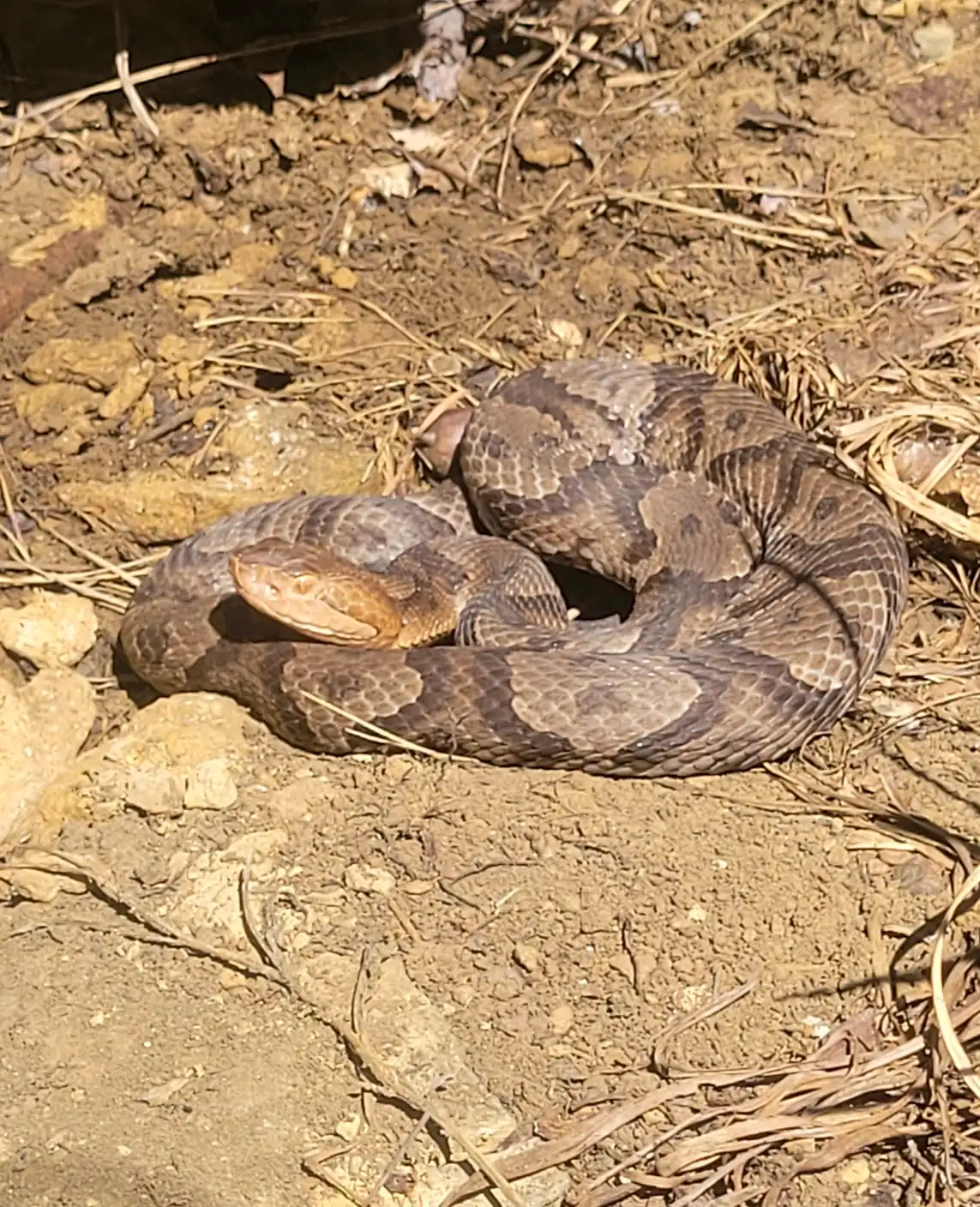
Defensive Behaviors
When threatened, copperheads often freeze in place relying on their camouflage to avoid detection.
If approached too closely, they may rapidly vibrate their tails, hissing as a warning. Copperheads are not typically aggressive unless touched or handled.
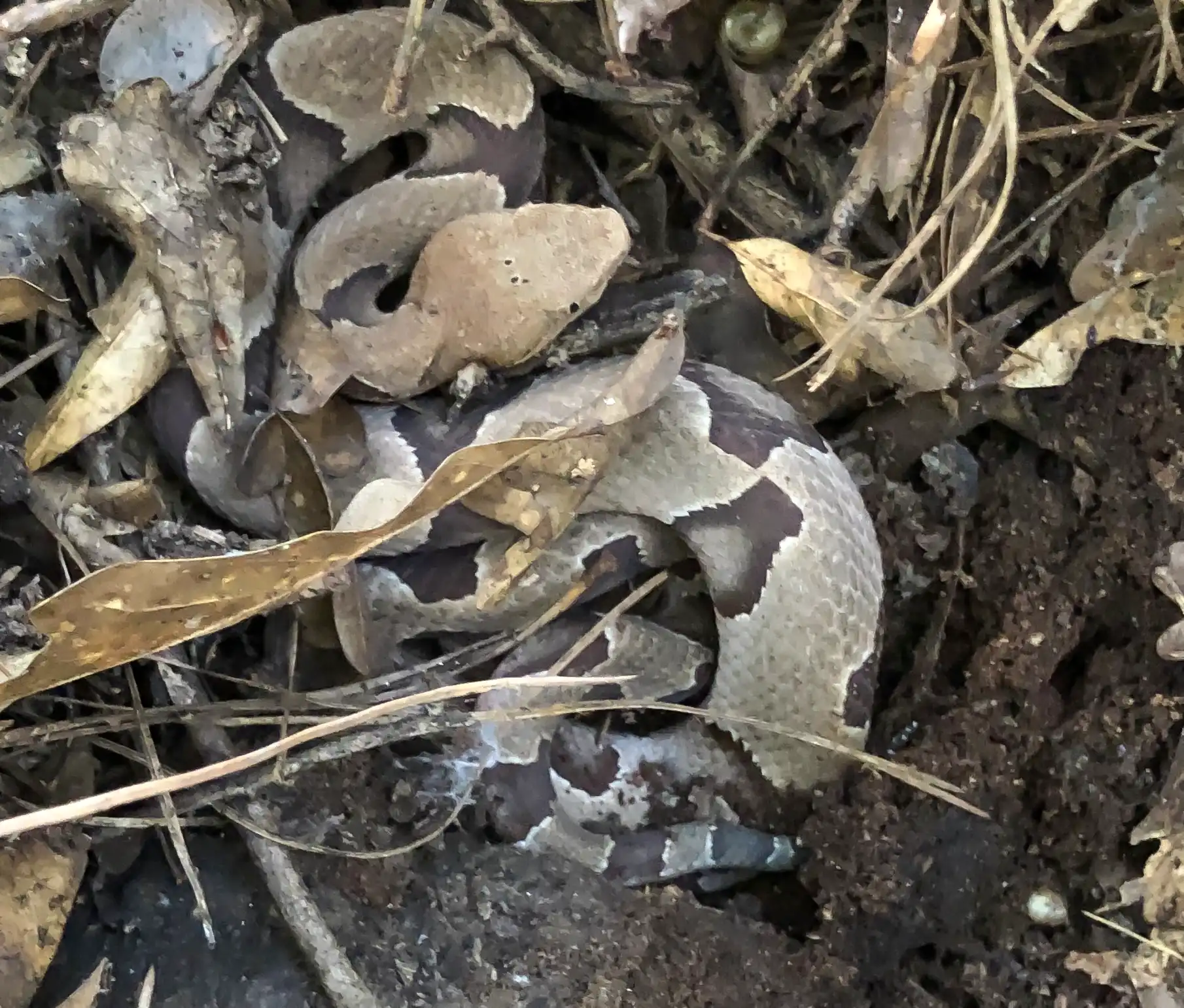
Bites
Copperhead bites are most frequent in the summer when humans are outdoors more often.
They tend to bite defensively when stepped on or handled. With proper medical treatment, copperhead bites are rarely fatal to healthy humans.
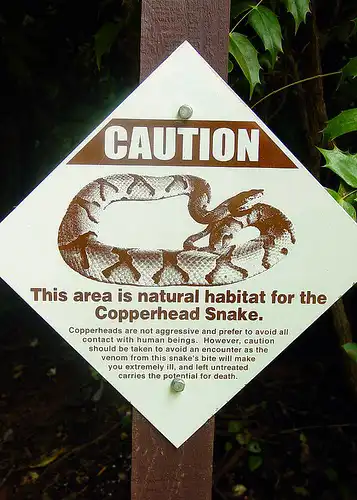
Copperhead Snake Range and Habitat
Range
Copperheads can be found all throughout Virginia.
Copperhead Snakes as a whole can be found across the Southern United States going as far north as Massachusetts and extending down to central Texas. This is due to the forested areas, and the deciduous trees that lose their leaves in the fall, which is their source of camouflage from other predators and prey
Habitat
Virginia is one of the best places to be for a copperhead. The weather is not too hot, while the winter is just warm enough for perfect hibernation conditions.
Copperheads can be in mountainous, forested, and swampy terrains, of which Virginia has loads of. Anywhere where they can hide in, such as bushes, debris, logs, and even construction sites, you can find copperheads present. So even if you live in the suburbs, copperheads can find a home in woodpiles, and shrubs. Copperheads love to bask in the sun, and they love to be in the water, which is why sometimes you can find them in pools.
Diet
Copperheads are carnivores. They mostly eat mice, but also small birds, amphibians, other snakes, and insects. Copperheads are essential in keeping Virginia’s rodent population down to manageable levels.
Copperheads attack their prey by ambush. They lie and wait until prey gets near and they strike, injecting their venom. After which they swallow their prey whole
Myth: Releasing Ratsnakes, Racers, or Kingsnakes Keeps Copperhead Snakes Away
Sort of True:
Releasing wild animals to new habitats is illegal in Virginia without a permit. While it is true that other snakes prey on copperheads, their diet does not solely consist of other snakes. Their prey can be rodents and insects as well, and if there is a choice, they would prefer to eat other animals rather than an animal that can fight back.
The ecosystem has a delicate balance, and the introduction of species to combat another has always failed and brought horrible consequences historically. Each species has a place in the ecosystem. The removal of copperheads could see an increase in the rodent population, or instead of having one or two Copperheads you know have a dozen other snakes
Copperhead Snakes Reproduction and Young
Reproduction
Copperhead Snakes mate from February – May and August – October. The male copperheads engage in a mating ritual where they will fight other males in the presence of the female they are wooing. When the male wins sometimes the female joins in the fight. Any male that backs off will be rejected by the female. If mated in the fall, the female can wait and give birth in the spring after hibernation.
Eggs and Young
Copperheads give birth in the late summer or in the fall usually from 2 to 18 babies. They do not lay eggs, so if you find any eggs on your property be at ease that they are not Copperheads. This is because they are ovoviviparous which means that the eggs are hatched in the body of the mother. Young Copperhead Snakes have yellow tips on their tails. These are used to mimic caterpillars to attract lizards and other smaller prey, until they get large enough to hunt larger prey.
Myth: Baby Copperheads Release All Venom in One Bite
False:
Young Copperheads do not release all their venom, and as such are not more dangerous than an adult copperhead. However, they have the same amount of venom as an adult per bite, which means a bit from a juvenile copperhead requires the same amount of attention as an adult bite.
Copperhead Venom and Danger
Venom Effects
Copperhead venom rarely leads to death however you must go to the hospital immediately if bit. A Copperhead bite can lead to an allergic reaction and infection, which will lead to death.
If You Are Bitten
Copperhead venom will lead to these symptoms:
- Redness/Swelling around the bite
- Extreme Debilitating Pain
- Nausea and Vomiting
- Getting hard to breathe
- Disturbed Vision
- Increase of Salivation and Perspiration
- Numbness of limbs and face
Pets Bit By Copperhead Snake
A pet bit by a copperhead must be taken to the vet immediately. Like humans, a copperhead bite is rarely fatal to a pet, however there is the risk of infection and allergic reaction, also your pet will be in extreme pain for a while if it goes untreated. Also, do not attempt any first aid, such as tourniquets, ice, or trying to suck out the venom.
If You Have Been Bitten by a Copperhead Snake
- Stay Calm an increased heart-rate will pump your blood faster which will make the venom spread throughout the body faster.
- Take a Photo or Video of the Snake this will lead dispatch to know what snake has bit you which will help get the right antivenin to you. If you can’t write down or make a note of the size, color, and patterns of the snake
- Dial 911. Do Not Drive Yourself to the Hospital Dizziness and passing out is a very common symptom from snake bites.
- Lay or Sit down. Be Comfortable
- Keep Bite Below Heart This will make the venom fight gravity to reach your heart.
- Remove Rings and Watches The swelling from the bite can cause swelling, which can lead to circulatory issues from watches and rings
Myth: Cutting and Sucking Out the Venom Helps Snake Bites
False:
Sucking the venom out of a bite is a futile effort, as by the time that you get to it a lot of the venom would be already spread out. Plus cutting and sucking will lead to an infection, which will make it more likely for the bite to be fatal.
